The image below shows a possible reconstruction of an oven / furnace for making glass beads. Photo taken at Moesgaard Museum, 2006.
The variant shown is a closed oven. Excavations in Ribe seem to indicate ovens might have been used there, although the actual design is unknown. (C.f. Risom, Thomas. Perlemageren fra Ribe. Forlaget Liljebjerget, 2013, p. 33.; Sode, Torben. “Glass Bead Making Technology.” In: Ribe Excavations 1970-76. Vol. 5, 2004, p. 84.)

Open fireplaces / hearths could have been another possible option for bead making.
The image below shows a reconstruction of such an open fireplace. The photograph was taken at the Archaeological Museum Groß Raden, 2011.

Examples of decorated wound beads from Haithabu and explanatory reconstructions of how they were made. Photos taken at the Viking Museum Haithabu, 2009.
Molten glass is wound around an iron mandrel prepared with a separating agent, so that the bead will slip off the iron after cooling.
A possible mandrel with a wooden handle was found at Ribe. (Sode, Torben. “Glass Bead Making Technology.” In: Ribe Excavations 1970-76. Vol. 5, 2004, p. 86)
The beads can be plain or decorated. The image below shows how wavy lines of red glass are “drawn” / melted into a wound bead. (Click for better quality.)
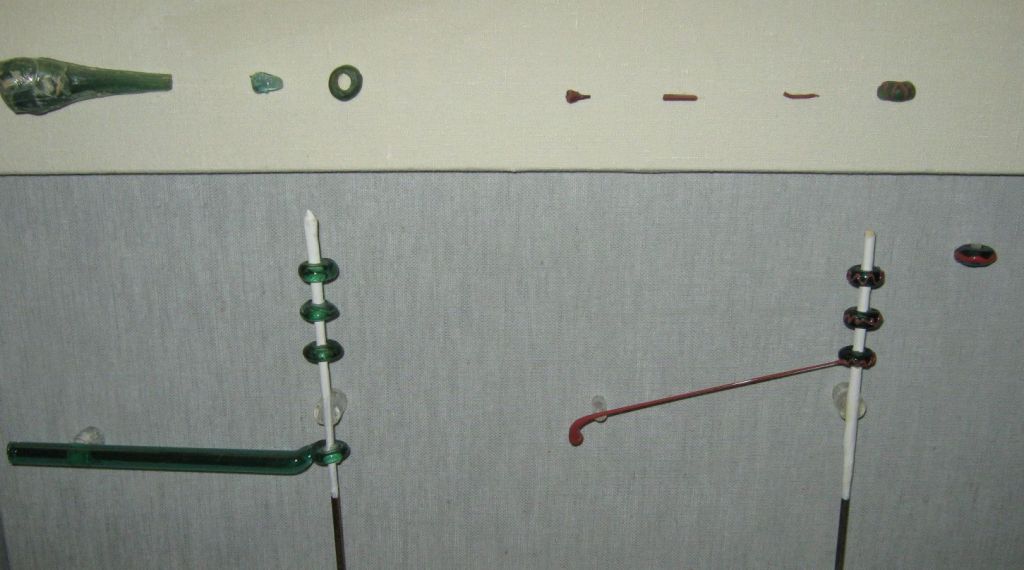
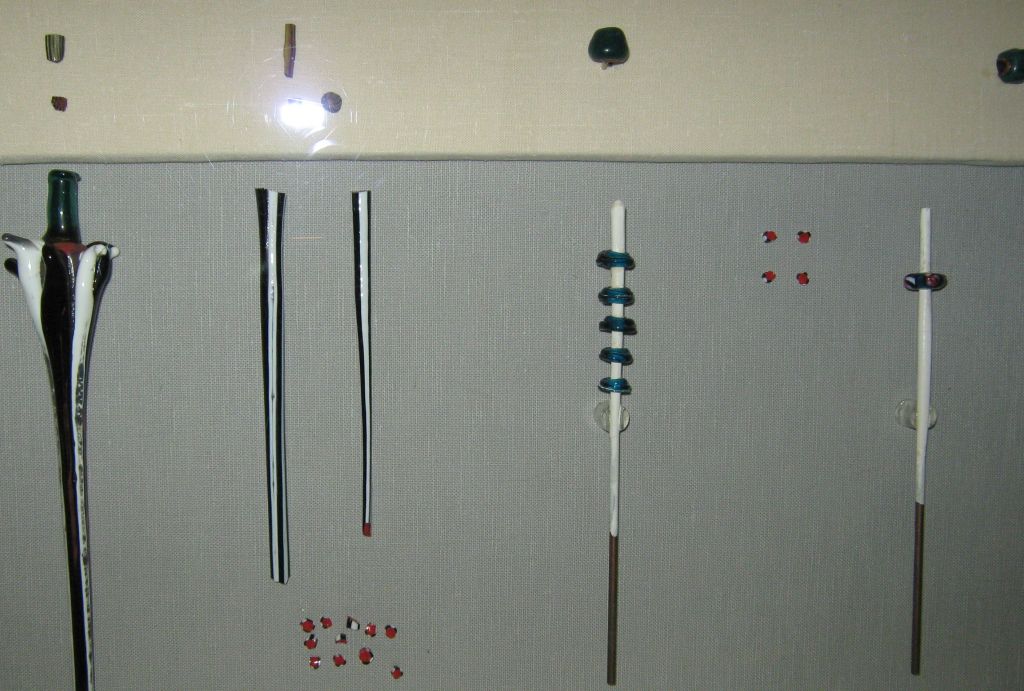
Glass rods of various colors are fused together, drawn out and cut into small sections. The resulting mosaic pieces are melted onto a wound bead as decoration.
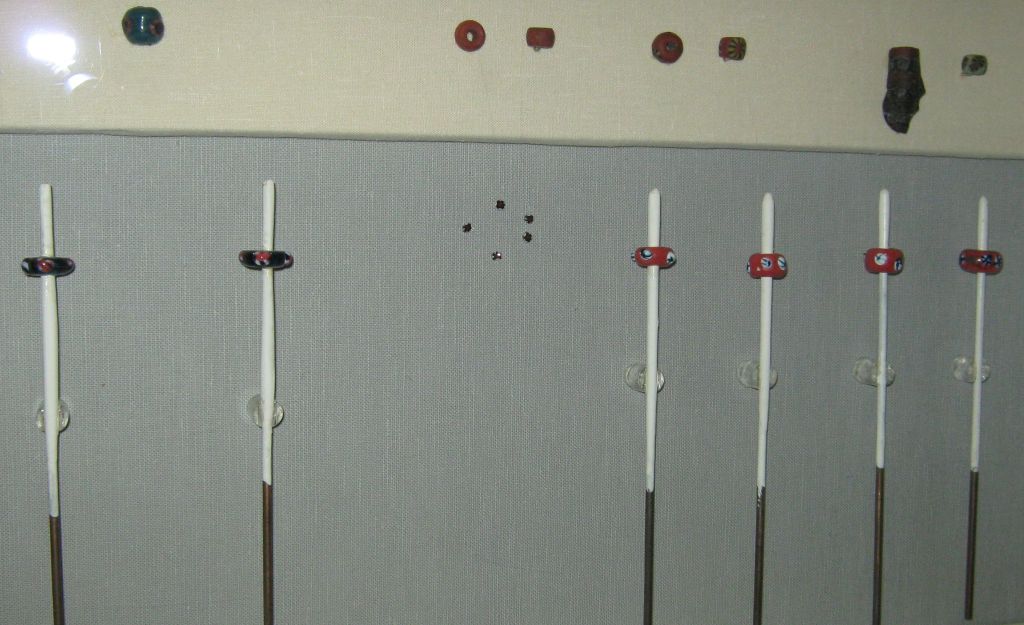
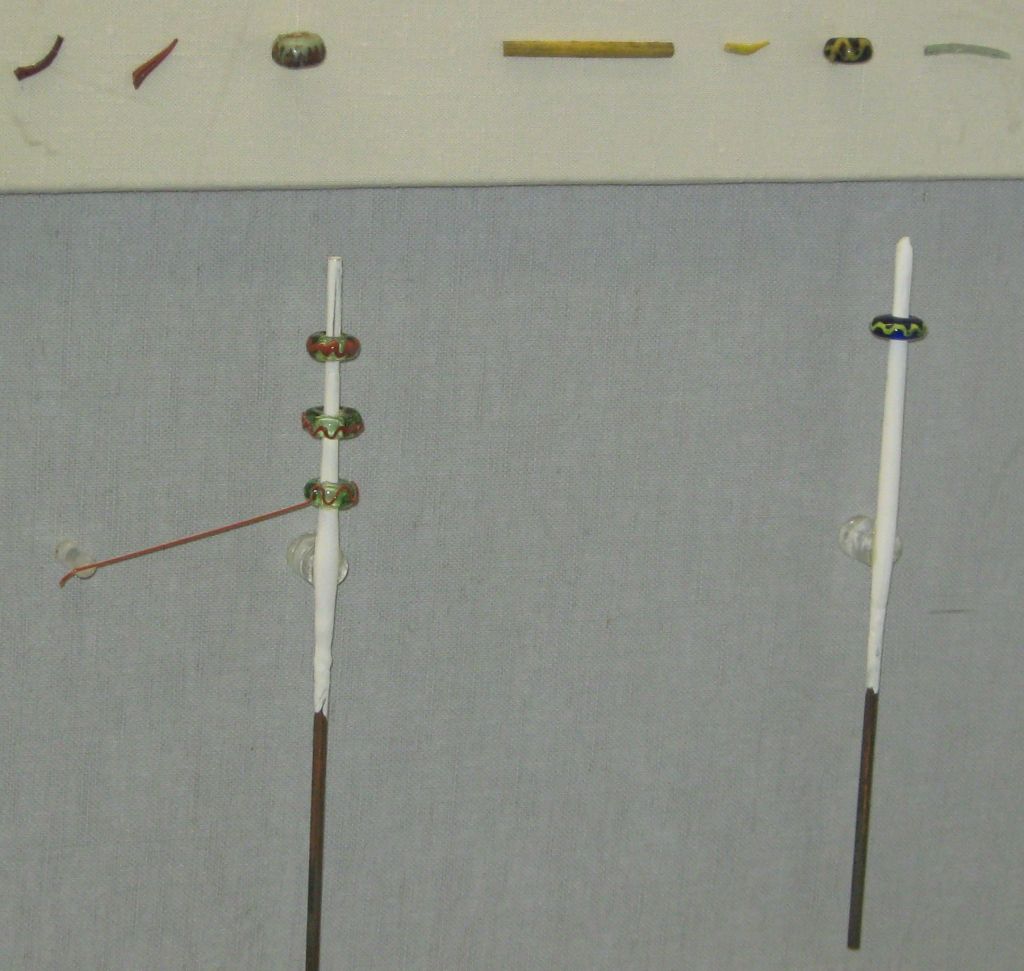
A depiction of various techniques to make different glass beads. The photograph was taken at the Archaeological Museum Groß Raden, 2011.

Left: Molten glass on a rod is prepared to be wound around a mandrel. The resulting bead is indented with a knife to make a so-called “melon bead.”

Example of a melon bead, drawn by me, 2023.
Right: Glass of different colors is fused together and drawn out and twisted into a decorative rod; then it is wound around a prepared bead to create two striped bands. A red band in-between is added afterwards.
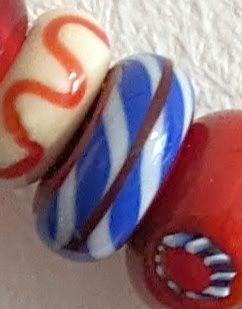
Example of a resulting bead. Reconstruction, photographed by me, 2024.
Making glass beads in a clay furnace on a forge during a reenactment event. The clay furnace is placed on the forge and coal is filled inside and ignited. Through a hole in the bottom air is pressed inside the furnace by bellows to reach the correct level of heat.

The glass is modern glass which is sold in rods. The tip of the rod is placed inside the furnace until the glass melts and can be wound around the iron mandrel.
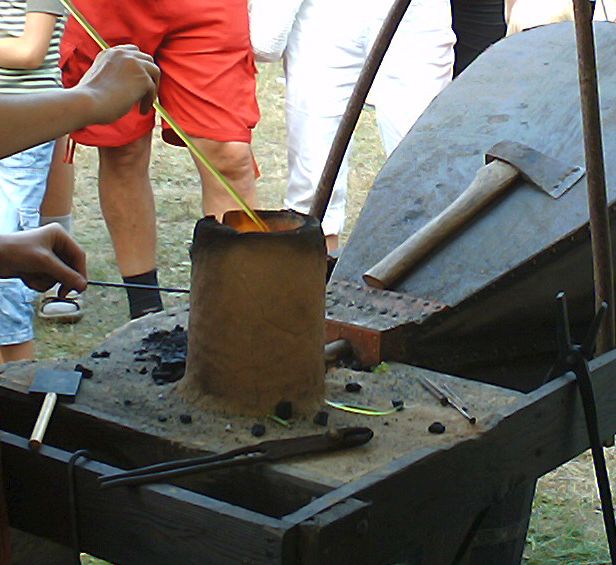
The wound bead is notched with a knife in order to create a decorative pattern.

Photos taken by me at Moesgaard Viking Moot, 2006. The furnace is merely a suggestion of how glass beads might have been created and not based on any specific archaeological find.
